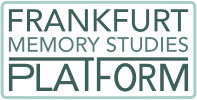Our Humboldt Fellow Magdalena Zolkos on “Reimagining Cultural Memory of the Arctic in the Graphic Narratives of Oqaluttuaq” — watch the video recording here.
Abstract: The Greenlandic oral story-telling tradition, Oqaluttuaq, meaning ‘myth’ or ‘folktale’, is recognized as an important entry point into Arctic collective memory. The graphic artist Nuka K. Godtfredsen and his literary and scientific collaborators have used the term as the title of graphic narratives narrating four moments in Greenland’s history (Saqqaq, late Dorset, Norse settlement, and European colonization), published from 2009 to 2018. Adopting a fragmentary and episodic approach to historical narrativization, the texts frame the modern European presence in Greenland as one of multiple migrations to and settlements in the Artic, rather than its central axis. I argue that, in consequence, the Oqaluttuaq narratives not only ‘provincialize’ the tradition of hyperborean colonial memories, but also provide a postcolonial mnemonic construction of Greenland as a place of multiple histories, plural peoples and heterogenous temporalities. As such, it also narrativizes loss and disappearance—of people, cultures, and environments—as a distinctive melancholic ‘core’ of Greenlandic history. Informed by approaches in the field of cultural memory and in the study of memorial objects, Marks’ haptic visuality and Keenan and Weizman’s forensic aesthetics, I analyze the graphic narratives of Oqaluttuaq in regard to their aesthetic dimensions, as well as investigate the role of archeological artefacts, which serve as narrative ‘props’ for multiple stories of encounter and survival in the Arctic.



